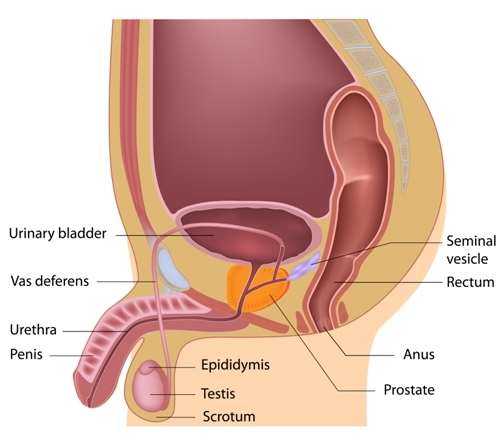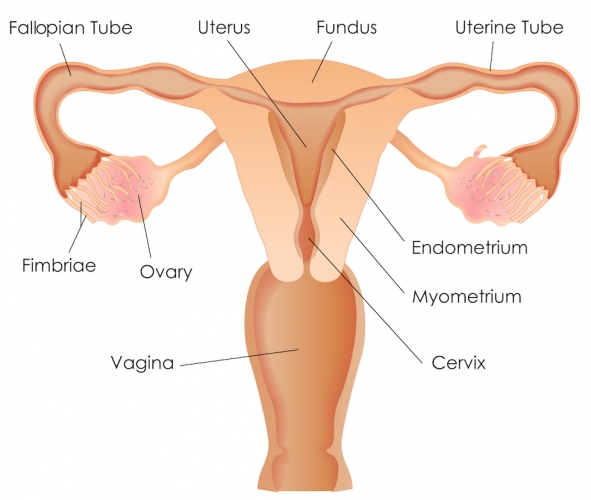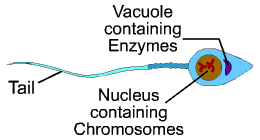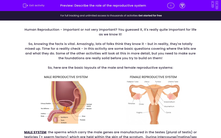Human Reproduction - important or not very important? You guessed it, it's really quite important for life as we know it!
So, knowing the facts is vital. Amazingly, lots of folks think they know it - but in reality, they're totally mixed up. Time for a reality check! In this activity, there are some basic questions covering where the bits are and what they do. Some of the other activities will look at this in more detail, but you need to make sure the foundations are really solid before you try to build on them!
So, here are the basic layouts of the male and female reproductive systems:
| MALE REPRODUCTIVE SYSTEM | FEMALE REPRODUCTIVE SYSTEM |
 |
 |
Male system: the sperm which carry the male genes are manufactured in the testes (plural of testis) or testicles (= sperm factory) which are held within the skin of the scrotum. During intercourse/mating/sex the sperm (see the image below) are ejaculated by passing first into the sperm duct and then along a tube called the urethra that runs down the penis. The urethra in the male is a tube that carries both sperm and urine out of the body.

Female system: the eggs are made in the two ovaries (= egg factory) and released into the fallopian tubes (or oviducts) at a rate of one a month. This happens part-way into a woman's menstrual cycle when the lining of the uterus (or womb) is removed and a new lining is created in case a baby is to develop there. The release of the egg occurs at ovulation in the menstrual cycle (see an image of an egg below). If the egg is to be fertilised successfully, that must happen in the oviduct. If the egg is fertilised, an embryo begins to develop and settles in the lining of the uterus where it will spend the next 9 months (in humans). This period of development is called pregnancy or gestation.

Time to put this information and what we've already learned about human reproduction into context - so let's have a look at a few questions.








